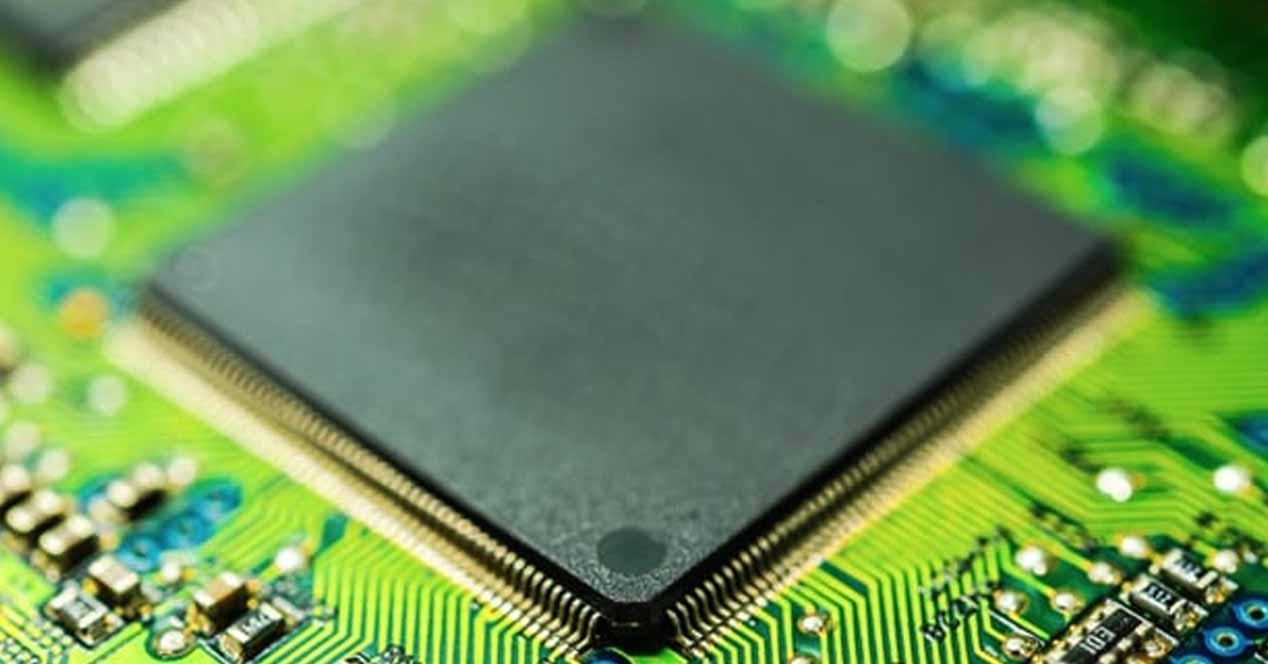As you well know, this current technology is evolving and improving its efficiency and performance does not mean that alternatives are not explored which can completely change the hardware as we know it. One of these alternatives is resistive memory, which combines the advantages of NAND and DRAM memories in one product, offering noticeable performance improvements, but which for some reason has not reached the market.
What is ReRAM, RRAM or resistive memory?
ReRAM is a type of non-volatile memory (and this is one of the differences from usual RAM, which is volatile and this means that when it stops receiving power, the data it contained are lost) that it combines, as we have already said, the advantages of DRAM and NAND memories in a single product. It is made up of three layers: an upper (metallic electrode), a lower (non-metallic electrode) and a central one that acts as if it were a switch that determines which bit is stored (ones and zeros, being a 1 connected and a 0 not connected).
RRAM works by changing resistance using a solid state dielectric material also known as memory, in a manner similar to CBRAM (Conductive Bridge RAM) and PCM (Phase Change Memory).
ReRAM works differently from how NAND or RAM works. Unlike NAND memory, this technology does not use transistors to store charge, but rather uses a layered design to store data. An RRAM cell has three layers with a dielectric in the middle that determines whether the cell stores a zero or a one.
The upper layer has a metallic electrode while the lower layer has a non-metallic electrode, so that the upper layer is able to donate metal ions to the lower layer creating a conductive filament between the two electrodes when the dielectric allows, and this is how it changes the state from one datastore value to another.
This type of memory greatly simplifies the complexity of the controller, so it is also much cheaper to manufacture using very common materials, not being composed of transist ors (which in turn simplifies its design) and having lower consumption ( up to 20 times less than NAND), with greater longevity (10 times more than NAND) and also with the possibility of stacking it to considerably increase the density.
In addition, one of the main design advantages of this technology is that the voltage level required is lower than that of other technologies, thus reducing consumption and making it very attractive for low consumption or power systems. Reading from memory is resistive as the name suggests, which also simplifies the circuit for reading memory cells.
Why has this memory not been implemented in the market?
As we have seen, ReRAM seems to have only advantages and no disadvantages, as it has better performance, lower consumption and is also cheaper to manufacture. Having said that, it is inevitable to wonder what is happening so that it is not already established in the market, and to answer this question you have to look back to know the history of its development.
In 2012, Rambus acquired an RRAM company called Unity Semiconductor; Panasonic released an evaluation kit that same year so that manufacturers could test its functionality, but it wasn’t until 2013 that Crossbar introduced the first pad-shaped prototype capable of storing 1TB of information (and Remember it was in 2013 when 1TB of storage was outrageous) that started to gain momentum and monopolize the interest of manufacturers. The company has announced that it has already planned mass production of the souvenir for 2015.
The problem is, manufacturers seem to disagree on the best combination of materials to make this type of memory. Panasonic’s initial evaluation kit used 1T1R tantalum oxide (1 transistor – 1 resistor) as the memory cell architecture, while the Crossbar prototype used an Ag / a-Si-Si memory structure that looked like a CBRAM but based on money. Since then, we have seen quite a few prototypes of ReRAMs based on different electrical materials, from perovskites (PCMO), transition metal oxides (NiO or TiO2) to phase change chalcogenides (Ge2Db2Te5).
For now, the terminology and applicability of a memristor to any physical device continues to be discussed. It is still disputed whether RRAM resistive switching elements are covered by the current theory of memristors, and to this it must be added that there are not a few companies that are still developing their engineering, so in short, no company is. yet presented a definitive model that can be mass produced for use in real devices.
Although this technology is anticipated as a possibility flash memory replacement (not RAM), the cost / benefit ratio and production performance of ReRAM have not been proven for companies to consider making a change or going into mass production. There is a long list of materials, as we said, that can be used to make this type of memory, and as there are new technologies or new materials discovered every time for it, for now they did not agree and, for this is not yet manufactured.











